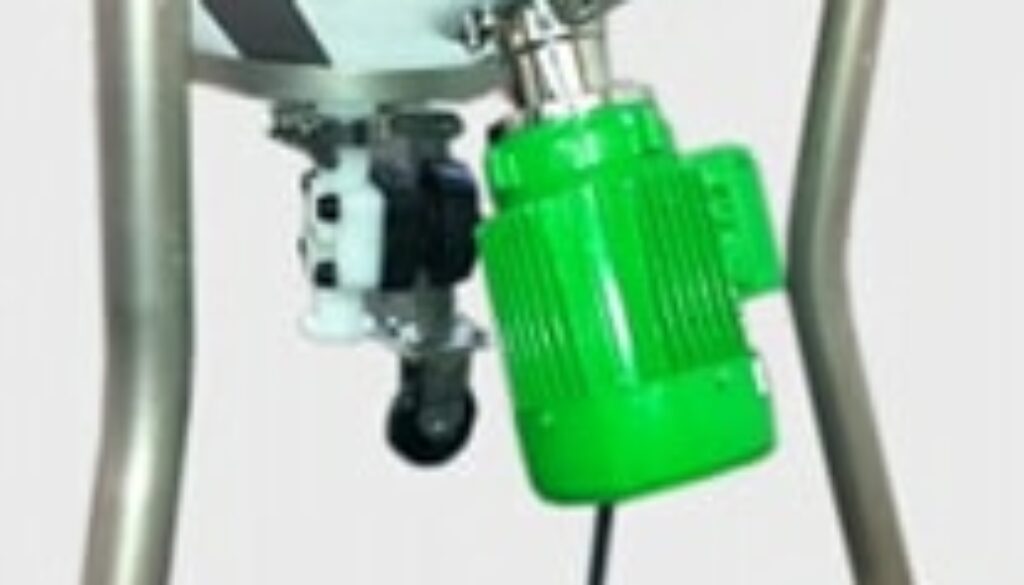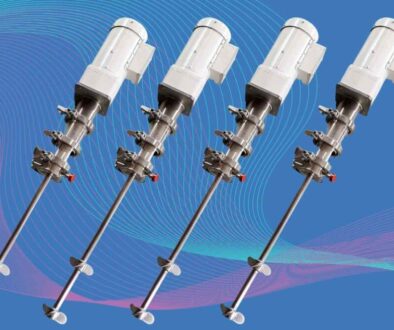The Versatility of Bottom Entry Mixers
Bottom entry mixers provide manufacturers in the pharmaceutical, biopharmaceutical and food processing industries with viable alternatives to top entry solutions. These mixers provide efficient mixing and blending of products, and can be custom designed to suit the specific speed, shear and agitation requirements for various applications.
The Benefits of Bottom Entry Over a Top Entry Mixer
Bottom entry mixers are ideally suited to mixing and blending applications in the pharmaceutical and biopharmaceutical industries. Although generally more expensive, they offer significant benefits over a top entry mixer:
- Low level mixing. The ability to mix to very low levels, and blend during drawdown makes bottom entry agitators perfect choice for high value product mixtures.
- Improved process purity. These mixers do not have to contend with the possibility of contamination from particulate matter falling into the tank from overhead bearings and seals used in top entry mixers, although top entry mixers can be outfitted with a debris well to prevent this.
- Easy installation. Very easy to install, and simple to maintain the mixer drive/gearbox since its at the bottom of the tank. Top entry mixers with long shafts need special rigging often times to install. The bottom entry mixer is easier to install than its top entry counterpart. The top entry mixer requires sturdy infrastructure to support its heavy overhead motor.
- More efficient mixing. The design of a bottom entry mixer promotes the formation of a vortex which ensures more efficient and effective blending. It also provides uniform mixing of the batch that continues until the vessel is almost completely drained.
- More available headroom. Top entry mixers can take up valuable room on the tank top, bottom mount mixing design eliminates that issue.
- More efficient cleaning-in-place (CIP). Mixer design enables more efficient CIP than the cleaning process of the agitator and shaft associated with a top entry mixer.
- Easier handling and operation. These mixers are much easier to handle and operate in tight spaces or where headspace is limited.
- Easier access for maintenance. Their low entry point makes them more accessible for maintenance. This also reduces safety concerns which are always an issue when dismantling top entry mixers for maintenance and repair.
Applications for the Use of Bottom Entry Mixers
Bottom entry high shear mixers are especially suited for:
-
- Buffer prep and Media prep
- Dissolving of solids
- Blending and dissolving difficult- to- wet powders and gums into liquids
- Low shear and high shear applications
- Filtration product hold tanks
- Yeast propagation
Mixers can be fitted to either stainless steel or polypropylene tanks and can be designed to conform to cGMP specifications for biopharmaceutical production. Users can choose from other options including mixer speed control, a double mechanical seal, multi-motion agitation and multi-shaft mixing. These mixers can also be designed to operate in tanks under pressure or vacuum.
Types of Bottom Entry Mixers
- Flange or Tri clamp mount with mechanical seal
- Welded design, flush mount, with mechanical seal
- Mag drive mixer sealless design
- Single use bottom entry mixer with disposable bag and mixing assembly
Bottom Entry Magnetic Drive Mixers for Sanitary Applications
Traditionally, all mixers have some type of mechanical seal at the point where the impeller shaft enters the tank. These can be single or double seal arrangements in the attempt to provide a sterile barrier between the interior of the vessel and the outside environment.
The problem with mechanical seals is that they all fail sooner or later. The sanitary magnetic mixer has been developed to do away with the need for a mechanical seal. A drive unit connected to the bottom of the tank is fitted with a magnet. When the drive turns, it locks onto a magnet on the mixer impeller to make it turn. The impeller is mounted on a spindle that is welded to a mounting plate inside the tank. Because there is no breach of the tank wall in this design, there is no need for a seal and sterility is almost guaranteed.
The use of mag mixers in bioreactors is of critical importance, as seal failure can have catastrophic consequences. Other typical uses for bottom entry mag mixers are for aseptic mixing, buffer preparation mixing and media make up agitation.
These mixers can be custom designed to include mixer speed control, multi-motion agitation or multi-shaft mixing, if a combination of top and bottom entry mixing is required. They can be fitted to stainless steel or polypropylene tanks.




